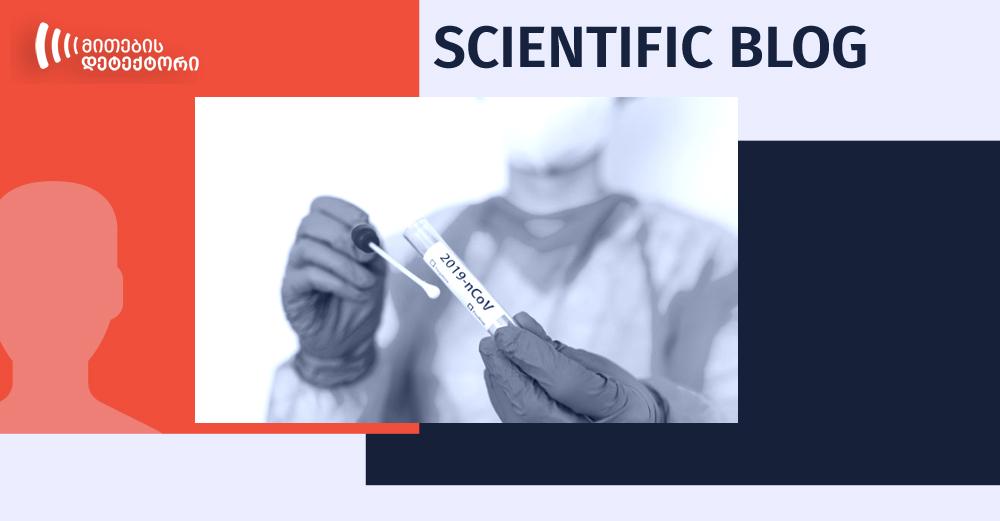The main symptoms of COVID-19 infection caused by SARS-CoV-2 are fever, dry cough, and shortness of breath. Since these resemble symptoms of the flu and numerous diseases caused by a respiratory infection, a doctor should determine if it’s necessary to test an individual with such symptoms.
At the beginning of 2020, before the large-scale spread of the virus, the Center for Disease Control gave a recommendation to only test people with symptoms and the ones who have had physical contact with an infected person. Later it was discovered that the disease could proceed without symptoms and such asymptomatic infected people were spreaders of the disease. Therefore, medics decided to test any person. We might surmise that testing asymptomatic people is a waste of resources, but it gives us the advantage to assess the epidemiological situation, isolate infected people and reduce the spread of the virus this way.
Most commonly, nasopharyngeal (nasopharynx) and oropharyngeal (oropharynx) swabs are used for diagnosing SARS-CoV-2. In some cases, the primary test result might be negative, medics retake samples from upper respiratory, as well as lower respiratory systems (sputum, endotracheal aspirate, or bronchoalveolar lavage) if they strongly suspect infection caused by a novel coronavirus. In order to take samples from patients, it’s necessary to follow biosafety measures to avoid infecting medical personnel, as well as thoroughly follow requirements for transporting and testing. A virus is easily degraded by environmental factors (light, high temperature, sunlight’s ultraviolet radiation, humidity) and that’s why it’s necessary to maintain the cold chain principle – the virus should be transported using the icebox.
What types of tests exist?
Generally, two types of tests are used for diagnosing viruses: one of which detects the presence of the virus inside the body at the time of testing and the second one provides information about the past infection. The latter is based on the principle that if infected, the human body’s immune system produces immunoglobulins – antibodies. When antibodies reencounter infection-causing pathogen, they promptly recognize it, stop it from multiplying, and with that, protect the body from reinfection. Some diseases determine strong immunity i.e. antibodies that last for a long time and protect the body for life.
Usually, it takes a couple of days to produce antibodies, testing a sample of blood is used for such type of examination. There is still no study on how strong is the immunity of a person infected by Covid-19, which is expected since it hasn’t even been a year since the first human case of SARS-CoV-2 infection. Moreover, there are few cases of reinfection.
Rapid antigen and molecular technique-based PCR tests are used to detect the presence of the virus in the body. PCR is considered a gold standard in the diagnosis of disease due to high sensitivity and specificity.
How accurate are the tests?
Per recommendations from the World Health Organization, the PCR method is used to detect covid-infection in the human body. The test detects the presents of SARS-CoV-2 at the time of the testing. The test is based on a reverse transcription-polymerase chain reaction (RT-PCR). PRC is considered a very accurate method during which there are close to none false-positive results. Incorrect test results might be a result of the improper taking of a swab, violation of requirements for transportation and sample storage, researcher’s mistake. That’s why sometimes tests are retaken based on a patient’s medical history and epidemiological data to rule out false results.
During reverse transcription-polymerase chain reaction, the first stage involves changing unstable RNA of the virus into stable DNA – reverse transcription. Whereas the following stage is the amplification of specific genes targeted for diagnostics.
PCR diagnoses SARS-CoV-2 relying on a segment of several genes. Commonly, manufacturers aim to produce tests that enable accurate and precise answers.
What genes are used for studies?
Before manufacturers put diagnostic tests on the market, scientific studies examine the sensitivity, specificity, and reliability of tests. Only after the detailed examination is it possible for companies to obtain the license, mass-produce and put tests on the market. Moreover, tests are revalidated at certain time intervals.
Duration of tests and storage conditions are emphasized in the manufacture of diagnostic tests for SArS-CoV-2. More comfortable (quick result, interpretation of results, storage condition, warranty period, and so on) tests are the ones that gain popularity among researchers. As of today, there are around 400 molecular technique-based SARS-CoV-2 diagnostic tests.
Different companies use different target genes for diagnosing COVID-19 as illustrated in the table below.
| COVID-19 diagnostic test manufacturer | Manufacturing country | Catalog number | Storage condition | Target genes |
| Altona Diagnostics | Germany | 821003 | −20 °C | Ea, S |
| BGI | China | MFG030010 | −20 °C | ORF1ab |
| CerTest Biotec | Spain | VS-NCO213L | RT | ORF1ab, N |
| KH Medical | Korea | RV008 | −20 °C | RdRp, S |
| PrimerDesign | Britain | Z-Path-COVID-19-CE | −20 °C | RdRp |
| R-Biopharm AG | Germany | PG6815RUO | −20 °C | E |
| Seegene | Korea | RP10244Y | −20 °C | RdRp, N, Ea |
Tests are based on the studies of one, two, or three target genes. In published scientific publication authors compared tests from different manufacturers based on their results. All tests in the study are >96% accurate. These tests don’t detect other respiratory infections, i.e. are characterized with high specificity. Authors of the publication conclude that studied tests can be used in the study of SARS-CoV-2 and diagnosing of COVID-19
From the first case of SARS-CoV-2 infection, Georgia follows the only diagnosis protocol that was developed by the World Health Organization and uses approved diagnostic tests for testing. Therefore, if all the stages for testing are done properly, questioning the given results is unfounded and lacks scientific evidence.
Mary Murtskhvaladze
Associate Professor Manager of the Molecular-Genetics Laboratory at the Institute of Ecology Ilia State University
The science blog was prepared by the Media Development Fund (MDF) with financial support from the Black Sea Trust (The German Marshall Fund). The views expressed in this material are those of the author and do not necessarily reflect the views of the Black Sea Trust.
























